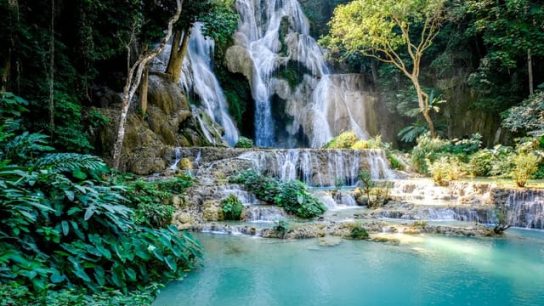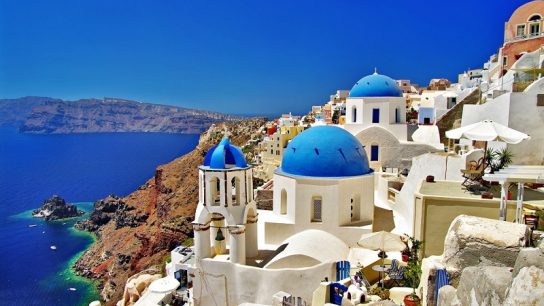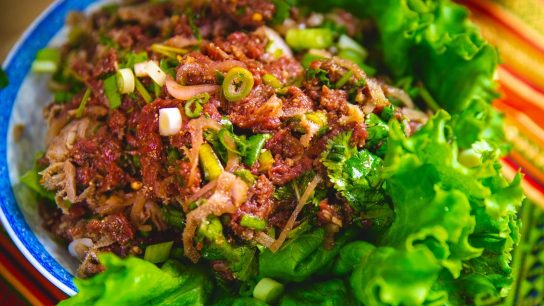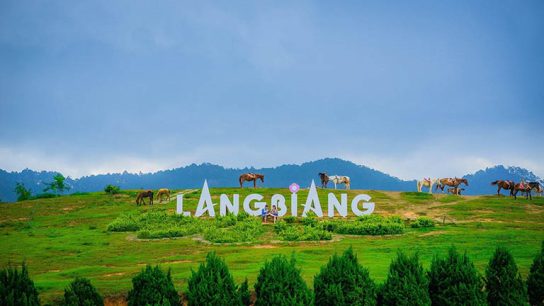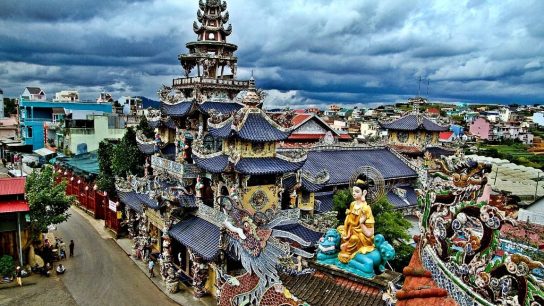Duong Lam ancient village, a long-standing village in Hanoi, still preserves the distinctive cultural features of old villages with communal houses, banyan trees, water wharves, and temples. The artistic values here have highlighted Duong Lam when traveling to Hanoi, likened to a “forgotten ancient citadel.” Let’s follow me as I explore this village to experience a part of this thousand-year-old land, where the unique traditional Vietnamese cultural features are preserved.
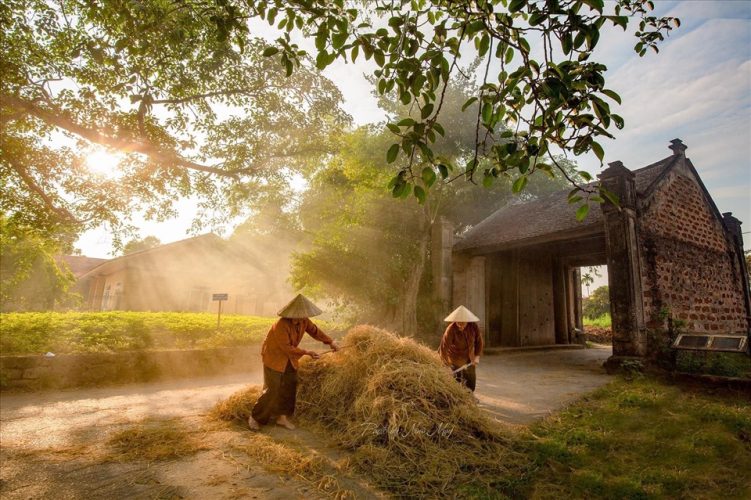
Overview of Duong Lam Ancient Village
Duong Lam Ancient Village is easily accessible as a day trip from the busy capital, situated approximately 44 kilometers to the west of Hanoi. The village is located in the Hanoi Municipality’s Son Tay Town. It’s very accessible to tourists because of its proximity to the capital city. The trip to Duong Lam, whether by car or public transport, is easy and provides beautiful views of the Northern Vietnamese countryside.
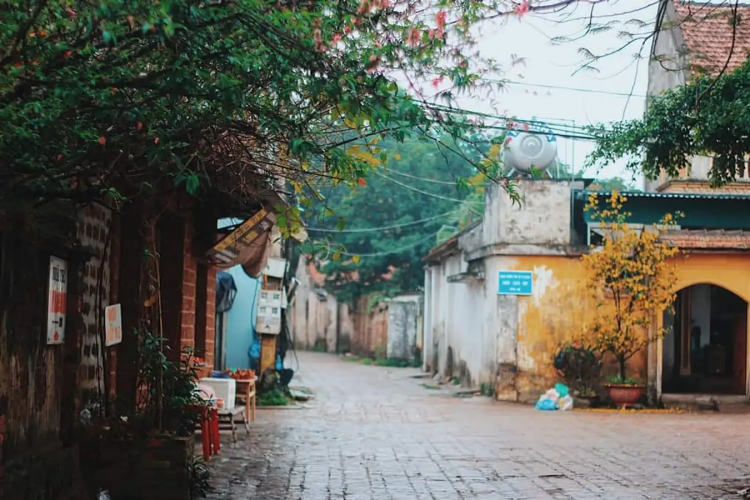
Duong Lam is unique among travel destinations because of its authentically antiquated atmosphere and well-preserved architecture. Some of the traditional Vietnamese homes in the village date back more than 300 years and are constructed of laterite and mud. Its winding lanes take visitors on a trip through time, allowing them to see the same sights and sounds that haven’t changed in centuries.
History of Duong Lam Ancient Village
Due to its significance in Vietnamese history, Duong Lam Ancient Village gave birth to two Vietnamese kings: Phung Hung and Ngo Quyen. Phung Hung is honored for his bravery and leadership, having stood up to the Chinese Tang Dynasty. Another well-known person is Ngo Quyen, renowned for winning the historic Battle of Bach Dang River and bringing Vietnamese independence from the Southern Han Dynasty in the tenth century.
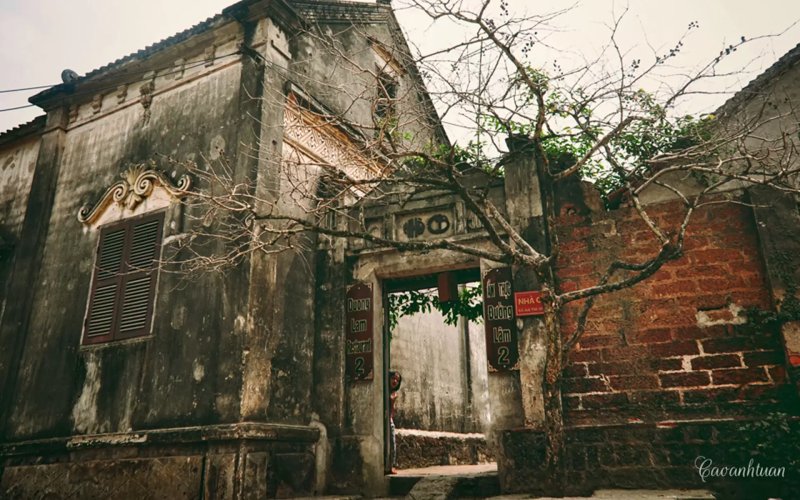
The village’s historic buildings, pagodas, temples, and communal homes are striking reminders of its past. These buildings, some hundreds of years old, have been painstakingly conserved to display the various historical eras’ architectural designs and cultural customs. Local government and community preservation efforts uphold the village’s historical integrity and promote sustainable tourism.
The Mong Phu Temple, dedicated to the village’s guardian deity, and the Mia Pagoda, which houses 287 Buddha statues and symbolizes the region’s rich spiritual legacy, are two noteworthy historical sites located within the village. Built from laterite and mud, the ancient houses serve as living historical monuments that directly link tourists to Vietnam’s rich cultural past.
How to Get There
Reaching Duong Lam Ancient Village from Hanoi is convenient and offers a few transportation options, ensuring a hassle-free trip.
By Car
Driving from Hanoi to Duong Lam takes about an hour. Renting a car or hiring a taxi provides a comfortable and flexible way to explore the village and its surroundings at your own pace.
By Bus
Public buses from Hanoi to Son Tay Town are frequent and budget-friendly. A short taxi ride or local transport from Son Tay will get you to Duong Lam. Bus routes such as 70A and 70B from My Dinh Bus Station head towards Son Tay.
By Motorbike
For the more adventurous, renting a motorbike is an excellent option. The ride offers a scenic journey through the Vietnamese countryside, adding an extra layer of adventure to your trip. Motorbike rentals are widely available in Hanoi, and the roads to Duong Lam are well-maintained, making the trip enjoyable and relatively straightforward.
Travel Tips
When planning your visit, it’s advisable to:
- Start Early: To make the most of your day trip, start early to avoid the midday heat and crowds.
- Wear Comfortable Clothing: Given the village’s rustic setting, comfortable walking shoes and weather-appropriate clothing are recommended.
- Bring Cash: Small local vendors and eateries might not accept credit cards, so carrying some cash is essential.
Main Attractions in Duong Lam Ancient Village
Known as the “Forgotten Ancient Town,” Duong Lam Ancient Village is a rich source of historical and cultural significance. Here are a few of the primary draws that make Duong Lam an essential travel destination.
Mong Phu Communal House

Situated in the center of Duong Lam is the 18th-century Mong Phu Communal House. With its large courtyard, calm pond, and elaborate wooden carvings, this communal house embodies the essence of traditional Vietnamese architecture. Held during significant ceremonies and festivals, the communal house functions as the village’s social and cultural center. The structure’s design reflects the harmonious coexistence of humans and the environment, which is central to Vietnamese culture.
Ancient Houses

Duong Lam is well known for its assortment of historic homes, many of which date back more than three centuries. These homes have traditional wooden frameworks and are built from laterite, a reddish-brown stone frequently found in the area. Entering these historic residences allows visitors to experience life as a Vietnamese family lived centuries ago, complete with antique furniture, family altars, and customary household items. The public houses of the Nguyen and Ha families are notable.
Mia Pagoda

Mia Pagoda is one of Vietnam’s most essential and ancient pagodas, constructed in the fifteenth century. 287 statues of various sizes, including the well-known image of the Buddha in Nirvana, can be found inside the pagoda. The pagoda’s architecture and serene setting make it a peaceful retreat for visitors. The exceptional collection of historical Buddhist statues at Mia Pagoda, which is considered to be masterpieces of Vietnamese sculpture, sets it apart.
Ngo Quyen Temple and Tomb
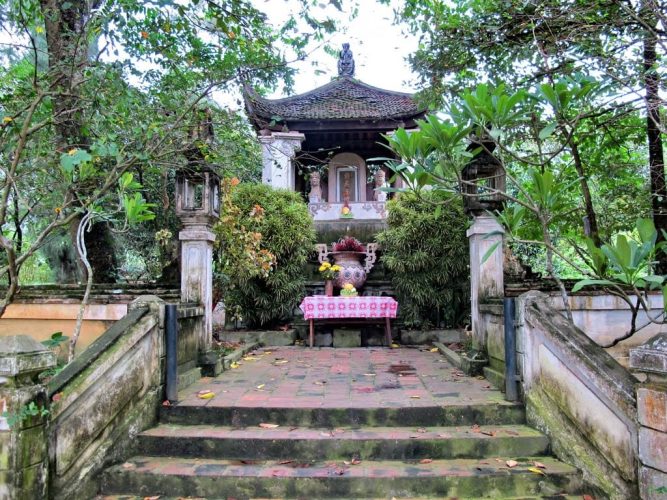
The Ngo Quyen Temple and Tomb honor the nation’s hero, Ngo Quyen, who ended Chinese rule over Vietnam in 938 by driving out the Southern Han invaders. A place for introspection and respect, the temple and tomb are situated in a serene area. The temple is an important historical site that honors Ngo Quyen’s legacy with statues and relics.
Phung Hung Temple
This temple, dedicated to another national hero, Phung Hung, is a symbol of Vietnamese tenacity and patriotism. Phung Hung led a successful uprising against the Tang Dynasty in the 8th century. The temple has statues and artifacts honoring Phung Hung’s accomplishments and significance in Vietnamese history. With verdant gardens and a calm ambiance, the location is exquisitely kept.
Giang Van Minh Worship House
Giang Van Minh, a diplomat who was killed in China during the Ming Dynasty, is honoured at the Giang Van Minh Worship House. There are mementos and items in the home that are connected to his life and diplomatic travels. This website emphasizes the sacrifices made by Vietnamese envoys and sheds light on the historical ties between Vietnam and China.
The Old Well
Located in the center of the village, the ancient well of Duong Lam is a symbol of communal life. This well, constructed centuries ago, was once the main water source for the villagers. It remains a gathering spot and a testament to the village’s historical way of life. The well’s presence underscores the importance of water in traditional Vietnamese culture and the communal use of resources.
The Best Time to Visit Duong Lam Ancient Village
October through April, which is the dry season, is the ideal time of year to visit Duong Lam. The weather is nice during this time of year, which makes walking tours perfect. With their blooming flowers and vivid green fields, the spring months of February through April are especially lovely.
Cultural Festivals and Events

Visiting during local festivals can provide an enriching experience. The village celebrates several traditional festivals, such as:
- Tich Dien Festival: Celebrated in January, it marks the beginning of the farming season.
- Harvest Festival: In autumn, it celebrates the bountiful harvest and involves traditional music, dance, and local cuisine.
Local Tips for You
To enhance your visit:
- Engage with Locals: The residents of Duong Lam are known for their hospitality. Engage in conversations to learn more about their customs and traditions.
- Participate in a Cooking Class: Some local families offer cooking classes where you can learn to prepare traditional dishes.
Do’s and Don’ts
- Do: Respect local customs and dress modestly when visiting religious sites.
- Don’t: Litter or cause any damage to the historical structures.
Recommended Itinerary
A suggested itinerary for a day trip:
- Morning: Arrive early and visit Mong Phu Temple.
- Late Morning: Explore ancient houses and interact with locals.
- Lunch: Enjoy a meal at a local eatery, trying dishes like Che Lam and Ga Mia.
- Afternoon: Visit Mia Pagoda and take a leisurely walk around the village.
- Evening: Return to Hanoi, reflecting on a day immersed in history and culture.
Conclusion
With its unique trip through time, Duong Lam Ancient Village offers a window into Vietnam’s rich cultural past. Every feature of the village, from its historic homes and temples to its mouthwatering regional food, narrates a tale of a bygone era. Duong Lam is an important place to visit, regardless of your interests—history buff, culture vulture, or just seeking a tranquil diversion from Hanoi’s bustle. Make travel arrangements now to enter a living museum dedicated to Vietnamese history.
Dam Sen Water Park: Saigon’s Premier Water Adventure Destination
Linh Phuoc Pagoda: A Cultural and Spiritual Oasis in Da Lat

